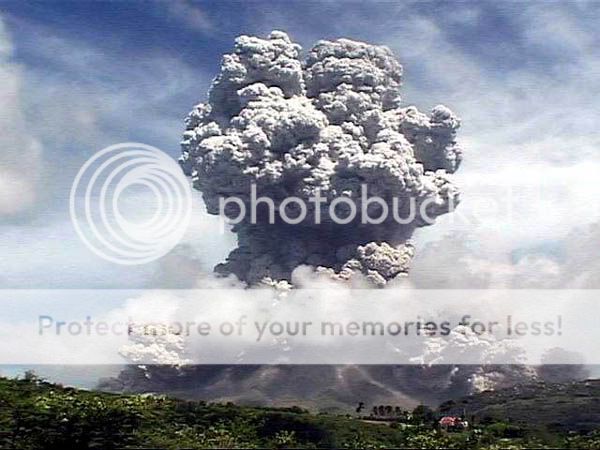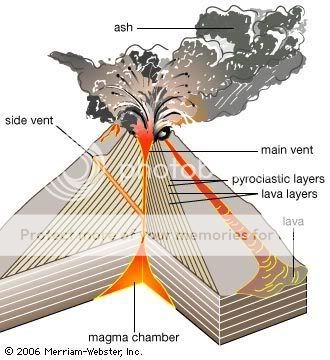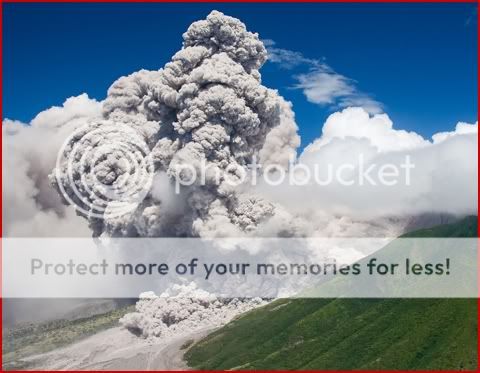
Montserrat is a British overseas
territory located in the Leeward Islands, part of the chain of
islands called the Lesser Antilles in the Caribbean Sea.
It measures approximately 16 km (10 miles) long and 11 km (7 miles)
wide, giving 40 kilometres (25 mi) of coastline.
It was named after Montserrat mountain in Catalonia, Spain by
Christopher Columbus in 1493 during his second voyage to the
region.
|
The capitol city of Plymouth was destroyed and two-thirds of the
island's population were forced to flee abroad by an eruption of
the previously dormant Soufrière Hills volcano that began on July
18, 1995.

The Soufrière Hills volcano (French for "Sulphur" Hills) is an
active stratovolcano with the many lava domes which form its
summit, reaching an altitude of 915m (3,002 feet). After a long
period of dormancy, it became active in 1995, and has continued to
erupt ever since.

A stratovolcano is usually tall
and conical in shape and is built up by many layers (strata) of
hardened lava, tephra, pumice, and volcanic ash. Unlike shield
volcanoes, stratovolcanoes are characterized by a steep profile and
periodic, explosive eruptions.
The lava that flows from stratovolcanoes typically cools and
hardens before spreading far due to its high viscosity. The magma
forming this lava has high-to-intermediate levels of silica with
lesser amounts of less-viscous mafic magma which makes it "sticky"
and thus less likely to flow over great distances.
Stratovolcanoes are sometimes called "composite volcanoes" because
of their composite layered structure built up from sequential
outpourings of eruptive materials. They are among the most common
types of volcanoes, in contrast to the less common shield
volcanoes.
Tephra is the name given to fragments of material that are thrown
out during a volcanic eruption. The fragments may vary in size from
the smallest particles (ash) to anything larger than 64 mm (2.5
inches) in diameter which are known as Volcanic Bombs.
When airborne, Volcanologists refer to tephra as pyroclasts and the
term pyroclastic flow is used to describe fast-moving currents of
hot gas and rock, which travel away from the volcano at speeds
which can be as great as 700 km/h (450 mph).

The Soufrière Hills volcano has become one of the most closely
monitored volcanoes in the world since its eruption began, with the
Montserrat Volcano Observatory taking detailed measurements and
reporting on its activity to the government and population of
Montserrat.
The current pattern of activity includes periods of dome growth,
punctuated by brief episodes of dome collapse which result in
pyroclastic flows, ash venting, and explosive eruption.
In order to log this cache, please email via my profile with
answers to the following questions:
1. Estimate the length of the lava flows from the Volcano crater to
the old airport,
2. Estimate the distance out to sea that the lava flows have
reached, creating new land in the process,
3. The names of three other famous Stratovolcanoes and their
current status (dormant / active.)
Your helicopter pilot should be able to assist you in making the
estimates!
In addition, please post a photo of you inside the helicopter and
another, taken from the helicoptor of the old airport / runway or
buildings in Plymouth.
Happy Caching!